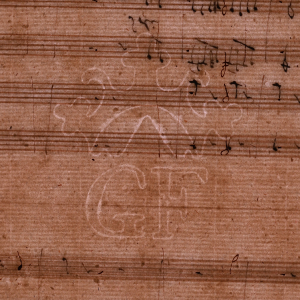- Function
-
- Composer
- Biography
João de Sousa Carvalho (1745-1798) is widely regarded as an important Portuguese composer, whose output includes large-scale sacred music, oratorios, operas and serenatas. He entered the Colégio dos Santos Reis in Vila Viçosa in October 1753 under the tutelage of Inocéncio de Sousa Mealha, presumably remaining there until 1760; in January 1761, as the recipient of financial support D. José I awarded to him and five other Portuguese musicians, Sousa Carvalho enrolled as a student at the Sant'Onofrio a Capuana conservatory in Naples (Alegria 1983, pp. 253-254; Fernandes 2009, p. 388). While in Italy, his first opera, a setting of La Nitteti, was performed in Rome in 1766. He returned to Portugal the following year, becoming a member of the St Cecilia Brotherhood in Lisbon in November 1767 (Luiz 1999, p. 23) and assuming duties as a composer and teacher as First Master of the Seminário da Patriarcal. In 1770, his salary increased with further responsibility to compose music for the royal chapel as directed by the king (Fernandes 2009, p. 378). Sousa Carvalho’s dramatic music is dated between 1766 and 1789, while as a composer of sacred music, he was active between 1761 and 1795. He made an advantageous marriage with one Maria Bárbara late in life and died leaving properties in the Algarve and Alentejo to his successor (Vieira 1900, i, p. 236; Sampayo Ribeiro 1936, p. 78).
As a master at the seminary, Sousa Carvalho taught a number of important later composers, including António Leal Moreira, Marcos Portugal and João José Baldi. In addition, in 1778, he became the music teacher of the royal children (Professor dos Infantes), in succession to David Perez (1711-1778). Another student was Giuseppe Toti, his successor as teacher of the royal children, who made a copy of the composer’s counterpoint exercises, entitled ‘Lezioni .. sotto la scuola del Sig.r Gio.ni de Souza Carvalho’, in 1790 (P-Ln, M.M. 4826). A further testament to Sousa Carvalho’s teaching activity, his Lições para Acompanhar, survive in a manuscript held in private hands (Trilha Neto 2011, pp. 302-316).
Sousa Carvalho is wrongly identified as having acted as Mestre de Capela of the Capela Real (Chapel Master of the Portuguese royal chapel) in Stevenson (2001) and earlier literature (see Fernandes 2009, p. 205). Another confusion stems from the existence of several musicians called João de Sousa, including two composers, who worked contemporaneously. D. Maria I and William Beckford, in referring to a composer called João de Sousa, probably meant Sousa Carvalho (Fernandes 2005, pp. 68-70). However, musical sources fail to distinguish clearly between them. Vieira (1900) attributed some works by Sousa Carvalho to his namesake in error (1900, ii, p. 341); some later historians held on to the assumption that all the music attributed to Sousa or João de Sousa was by Sousa Carvalho (Sampayo Ribeiro 1936, pp. 77-78; Fernandes 2005, pp. 74-75). Fernandes (2005) clarifies that the ‘other’ João de Sousa was João de Sousa Vasconcellos, who entered the St Cecilia Brotherhood in 1760. Luiz (1999) and Fernandes (2005) identify the autograph manuscripts and provide worklists for both composers.
Sousa Carvalho’s autograph manuscripts, numbering 19 according to Carlos Santos Luiz, are preserved in P-La, P-Lf, P-Ln and P-Mp (see Luiz 1999, p. 60). Late examples (e.g. P-Ln, M.M. 350, P-Ln, M.M. 4951) tend to feature a C clef with less curvature than is the case in those dating from before 1780. There are, in addition, manuscripts of Italian origin containing works by other composers that were altered by Sousa Carvalho: P-Ln, F.C.R. 253, an anonymous keyboard concerto (possibly by Pietro Alessandro Guglielmi), and P-Ln, F.C.R. 160, a score of Niccolò Piccinni’s Li napoletani in America (1768) in the hands of several copyists. Sousa Carvalho’s revisions in F.C.R. 160 are presumably connected to the staging of this opera at the Teatro da Ajuda in 1775 (Alvarenga 1995, p. 129). They include a recopied recitative on p. 240 of the volume containing the second act.
José Augusto Alegria, História da Capela e Colégio Dos Santos Reis de Vila Viçosa (Lisbon, Fundação Calouste Gulbenkian, 1983).
João Pedro d'Alvarenga, ‘Sobre a autoria das obras para tecla atribuídas a João de Sousa Carvalho’, Revista Portuguesa de Musicologia, 4-5 (1995), pp. 115-145.
Cristina Fernandes, Devoção e Teatralidade: as Vésperas de João de Sousa Vasconcelos e a prática litúrgico-musical no Portugal Pombalino (Lisbon, Edições Colibri, FCSH-UNL, 2005).
Cristina Fernandes, ‘O sistema produtivo da Música Sacra em Portugal no final do Antigo Regime: a Capela Real e a Patriarcal entre 1750 e 1807’, PhD thesis (Universidade de Évora, 2009).
Mário Sampayo Ribeiro, A música em Portugal nos séculos XVIII e XIX (Bosquejo de história crítica) (Lisboa: Inácio Pereira Rosa, 1936).
Carlos Santos Luiz, João de Sousa Carvalho: Catálogo Comentado das Obras (Lisbon: Fundação Calouste Gulbenkian, 1999).
Robert Stevenson, revised by Manuel Carlos De Brito, ‘Carvalho, João de Sousa’, Oxford Music Online: Grove Music Online (2001), [https://doi.org/10.1093/gmo/9781561592630.article.05047]
Mário Marques Trilha Neto, “Teoria e prática do baixo contínuo em Portugal (1735-1820)”, PhD thesis (Universidade de Aveiro, 2011).
Ernesto Vieira, Diccionario biographico de musicos portuguezes: historia e bibliographia da musica em Portugal, 2 vols. (Lisbon: Typographia Mattos Moreira & Pinheiro, 1900).
- Source(s)
- Handwriting identifiers
-
- C-Clef
-
- Type 1
- Type 2
- F-Clef
-
- Type 2
- G-Clef
-
- Type 1
- Type 2
- Images
-
-














































































